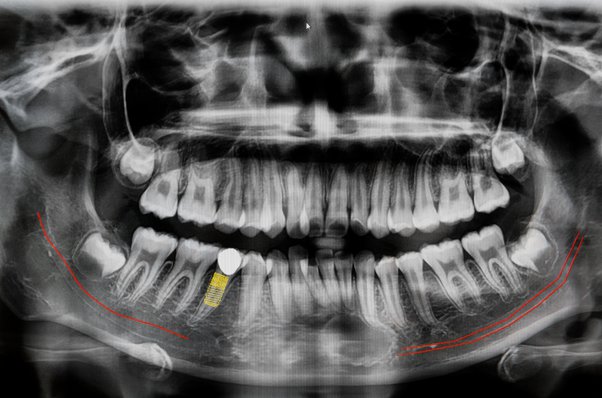Introduction
When you visit your dentist, you may have noticed that they often recommend X-rays as part of your dental care routine. You might wonder why dentists place so much emphasis on X-rays and why they consider them essential for your oral health. In this article, we will explore the reasons why dentists push X-rays and the benefits they provide in diagnosing and treating various dental conditions. By understanding the significance of X-rays, you can make informed decisions about your dental care.
Importance of X-Rays in Dentistry
Early Detection of Dental Issues
Dentists recommend X-rays as a preventive measure to catch dental problems in their early stages. Many oral health issues, such as cavities, gum disease, or impacted teeth, may not be immediately visible during a routine dental examination. X-rays provide dentists with a comprehensive view of your teeth, gums, and jawbone, allowing them to identify potential concerns that may not be visible to the naked eye. By detecting these issues early, dentists can provide timely and effective treatment, preventing further complications.
Accurate Diagnosis
X-rays play a crucial role in accurate diagnosis. They provide detailed images of your teeth and surrounding structures, helping dentists identify the extent of dental decay, bone loss, or infections. With this information, dentists can develop a precise treatment plan tailored to your specific needs. Whether it’s planning for a dental filling, root canal therapy, or orthodontic treatment, X-rays enable dentists to make informed decisions and provide optimal care.
Monitoring Oral Health
Regular X-rays also serve as a valuable tool for monitoring your oral health over time. By comparing current X-rays to previous ones, dentists can track changes in your dental condition. This allows them to detect any signs of deterioration or progression of dental issues, providing proactive treatment before they become more severe. Monitoring your oral health with X-rays ensures that potential problems are addressed promptly, leading to better long-term outcomes.
Different Types of Dental X-Rays
Bitewing X-Rays
Bitewing X-rays are commonly used to examine the upper and lower back teeth. They provide a detailed view of the tooth’s crown and the supporting bone structure. Bitewing X-rays are particularly useful in detecting dental decay between teeth, gum disease, and changes in bone density. Dentists often take these X-rays during routine check-ups to assess the overall health of your teeth and gums.
Periapical X-Rays
Periapical X-rays focus on individual teeth, capturing images from the tooth’s crown to the root and surrounding bone. These X-rays help dentists visualize the entire tooth structure, including the root, supporting bone, and surrounding tissues. Periapical X-rays are beneficial in diagnosing specific dental problems, such as abscesses, cysts, and abnormalities in tooth development.
Panoramic X-Rays
Panoramic X-rays provide a comprehensive view of your entire oral cavity, including the teeth, jaws, and temporomandibular joints (TMJ). These X-rays are especially useful in assessing impacted teeth, jaw disorders, sinus problems, and detecting tumors or cysts. Panoramic X-rays offer a broader perspective of your oral health, aiding in the diagnosis and treatment planning of various dental conditions.
Safety Measures in Dental X-Rays
Minimal Radiation Exposure
One concern patients may have regarding X-rays is radiation exposure. However, it’s important to note that dental X-rays emit very low levels of radiation, making them safe for regular use. Advancements in technology have significantly reduced radiation doses associated with X-rays, ensuring patient safety while providing valuable diagnostic information.
Lead Aprons and Thyroid Collars
To further enhance safety during dental X-rays, dentists use lead aprons and thyroid collars. These protective barriers shield the body and sensitive tissues from unnecessary radiation. By wearing lead aprons and thyroid collars, patients can rest assured that their overall safety is prioritized during X-ray procedures.
Digital X-Rays
Digital X-rays have revolutionized dental imaging. Compared to traditional film X-rays, digital X-rays offer several advantages. They provide instant images, reduce radiation exposure by up to 80%, and allow for easy storage and retrieval of patient records. Digital X-rays also facilitate enhanced image manipulation, aiding dentists in accurate diagnosis and treatment planning.
FOR MORE
For more informative and knowledgeable articles or blogs visit our site and get benefits from knowledge.https://cincinnatidentalservices.org
Conclusion
Dental X-rays are an indispensable tool in modern dentistry. They enable dentists to detect dental issues at an early stage, accurately diagnose problems, and monitor oral health over time. With various types of X-rays available, dentists can obtain detailed images of teeth, gums, and jaws, facilitating targeted treatment. It’s essential to prioritize your oral health and trust your dentist’s recommendation for X-rays, as they play a vital role in maintaining a healthy and beautiful smile.
Frequently Asked Questions
No, dental X-rays are safe and emit minimal amounts of radiation. The radiation levels are well within the safety limits prescribed by regulatory bodies. Dentists take necessary precautions, such as using lead aprons and thyroid collars, to further minimize radiation exposure.
The frequency of dental X-rays depends on your individual dental needs. Typically, dentists recommend X-rays once every 6 to 18 months for regular check-ups. However, if you have specific dental concerns or require extensive treatment, your dentist may recommend more frequent X-rays.
Dental X-rays are generally safe during pregnancy, especially when necessary for diagnosing and treating dental issues. However, to minimize radiation exposure, dentists use additional precautions, such as lead aprons and thyroid collars. It’s important to inform your dentist if you are pregnant or suspect pregnancy before any X-ray procedure.
While X-rays are a valuable diagnostic tool in dentistry, there are alternative imaging techniques, such as ultrasound and MRI. However, these methods may have limitations and are not suitable for all dental conditions. Your dentist will determine the most appropriate imaging method based on your specific dental needs.
X-rays can reveal a wide range of dental conditions, including tooth decay, gum disease, bone loss, infections, impacted teeth, jaw disorders, and abnormalities. They provide a comprehensive view of your oral structures, enabling dentists to make accurate diagnoses and create effective treatment plans.

